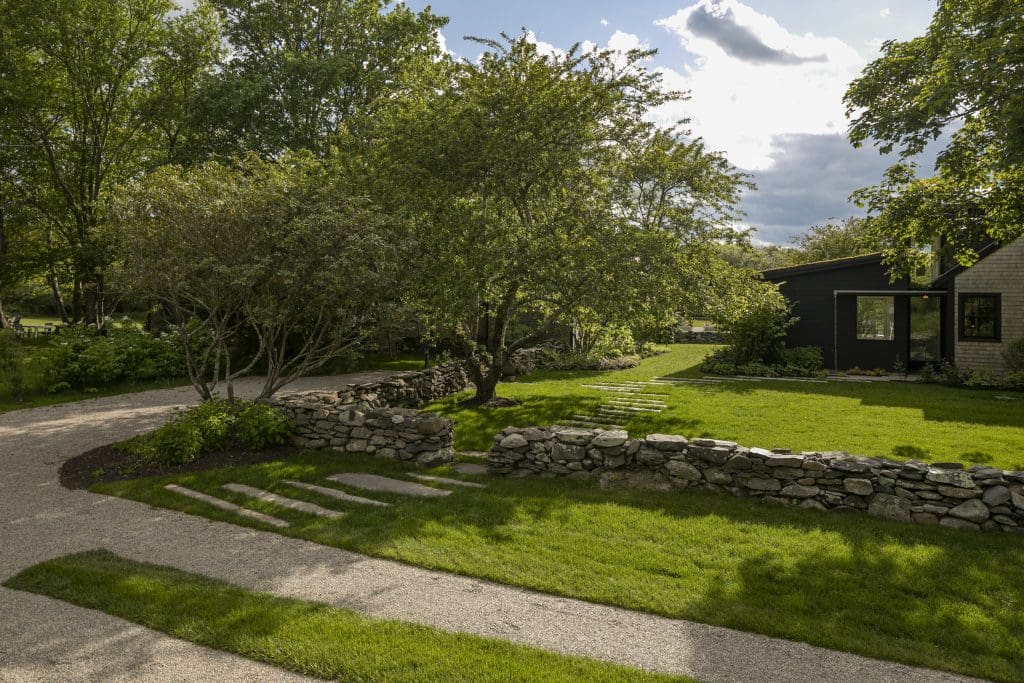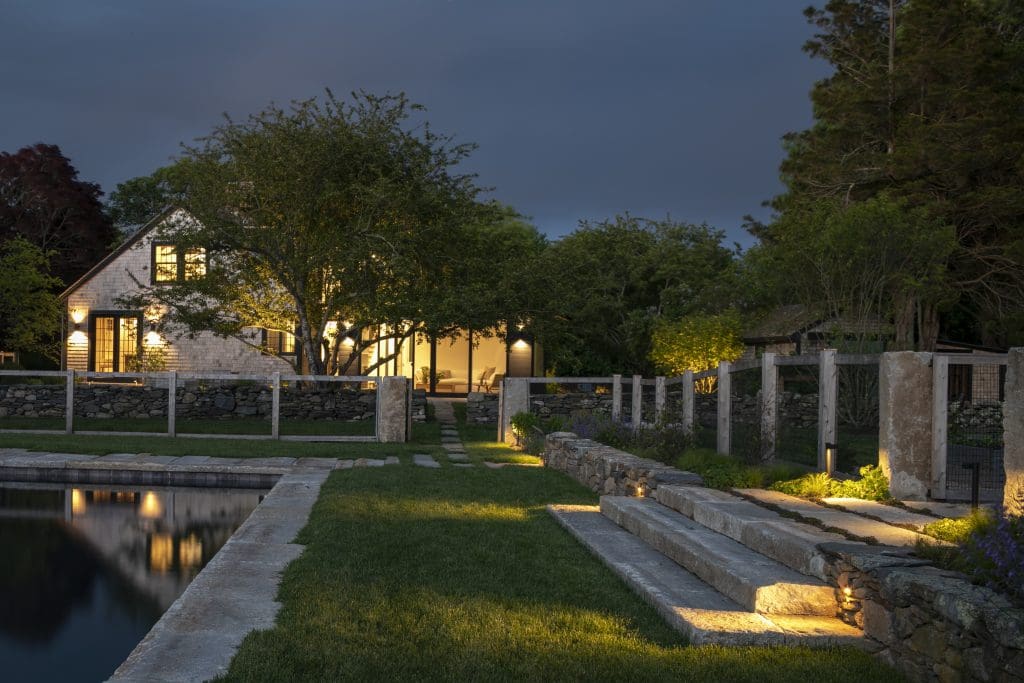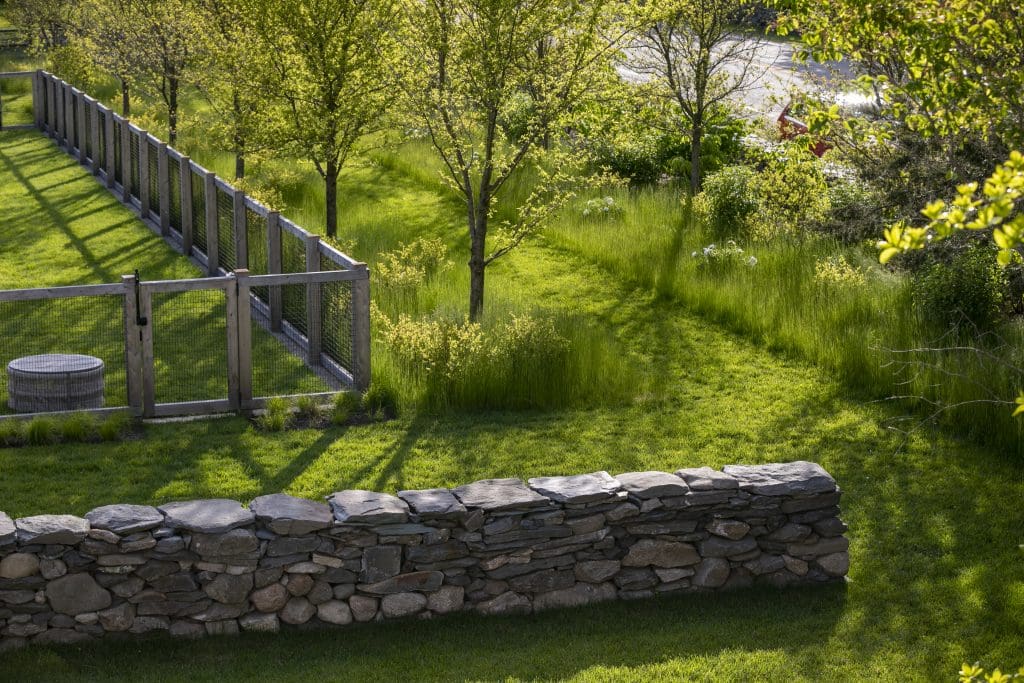
Landscape Creations of RI, based in Saunderstown, Rhode Island, was able to take a property in Little Compton, Rhode Island, that features a 250-year-old farmhouse, barn and horse paddock, and restore it to its former glory.
The site is the summer residence of a family that lives in Boston the rest of the year. They were looking for an escape from the city and to create a place the whole family could relax and enjoy the outdoors together.

Landscape Creations was introduced to the project by the landscape architect, Matthew Cunningham Landscape Design. Their work on this project earned Landscape Creations a Silver Award in the 2020 Awards of Excellence.
“As homeowners invest more in their properties, finding a landscape partner who can handle increasingly sophisticated demands is important to them,” says Ann Gardner, marketing consultant for Landscape Creations. “Winning an NALP Award of Excellence helps us distinguish ourselves as up to this challenge. Both landscape architects and prospective clients can rest assured knowing that we are nationally recognized for producing beautiful landscapes at the highest caliber. Plus, earning national recognition for a job well done is a wonderful way to celebrate the talents of our team!”
The project features outdoor amenities like a pool, fire pit and terrace while staying true to the home’s sense of place.
“The goal was to balance the upgrades with details that harken to its past,” Gardner says. “So, we worked with existing materials or sourced new materials carefully to match the patina of the farm. For example, the foot washing station is discretely incorporated into the stone wall surrounding the pool. Existing signature dry-stacked ‘farmer walls’ crisscrossing the property were mended and surgically cut to accommodate new pathways. And, where the landscape design called for the addition of new walls, antique rocks were used to replicate existing walls and seamlessly blend old and new.”

The installation process took about one year. Landscape Creations used tons of reclaimed granite to keep with the site’s rustic setting and history.
The reclaimed pieces of granite were hard to find and difficult to work with as they required a tremendous amount of time and effort to fit together with hand-chiseling, sawing and torching the edges. Because of the granite steps’ immense weight, they were placed using slings, excavators and a vacuum lift. The patio and fire pit were made from reclaimed granite procured from parking lot curbs, bridge parts, and old foundation slabs.

Some of the challenges Landscape Creations faced included the drilled well being ineffective in providing adequate water for the irrigation system. Due to the lack of well water, they decided to use more zones of irrigation going up from 32 to 47 irrigation zones so the system could handle it better.
Despite the issue with the well, the site is very wet on a seasonal basis so when they were creating the Gunite pool the hole filled with water and was slow to drain.
“We dug a sump under the pool and used a pump throughout construction to keep water out,” Gardner says. “Just prior to installing the Gunite, we removed the pump, filled the sump with crushed stone, and shot the Gunite. Drains were built into the pool with pressure relief valves to counteract the pressure from groundwater, allowing the water to enter the pool should the pool ever be empty during the periods of the year when that is an issue.”

The house was near the road so an allee of crabapple trees was planted to create a separation between the road and the pool area.
Gardner says the homeowner worked closely with the landscape architect to identify eco-friendly and drought-tolerant plant options.
“The homeowners wanted the property to feel laid-back and friendly – a place where kids could run on the grass – and without intense maintenance or a big carbon footprint,” Gardner says.
Interested in participating in the Awards of Excellence? Submit your entries by Aug. 9, 2021.

